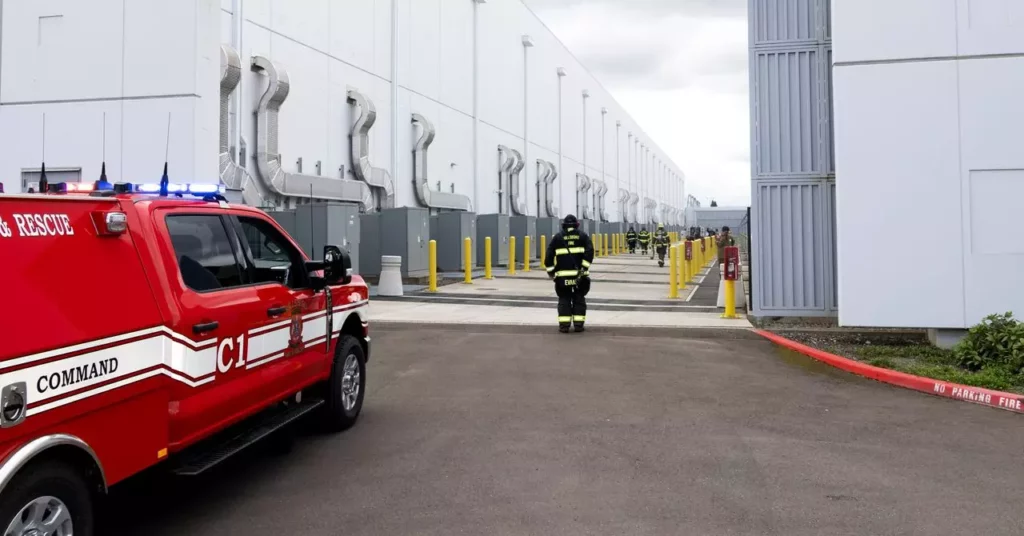Amidst the rapid expansion of digital infrastructure, there exists a false sense of invincibility surrounding data centers. These hubs of information processing and storage are often regarded as secure fortresses—robust, resilient, and well-protected. However, this perspective is deeply flawed. The recent high-profile fire at a major data facility operated by Digital Realty, serving Elon Musk’s X, has shattered this illusion. It serves as a stark warning that beneath the surface of technological progress lies a fragile ecosystem prone to critical failures. As society becomes increasingly dependent on cloud services and AI, we tend to overlook the vulnerabilities that threaten to destabilize the entire digital backbone. We must challenge the complacency that engineering safety measures are sufficient; the truth is, we are vastly unprepared for the scale and complexity of modern data center risks.
Hazards of Over-Complexity and Escalating Demands
The surge in computational power demand, driven by generative AI and big data, has pushed data centers to the brink of operational limits. High-density server racks, advanced backup systems, and elaborate cooling infrastructures are now standard. While these innovations aim to boost performance and reliability, they inadvertently introduce myriad potential failure points. Over time, the electrical infrastructure—comprising uninterruptible power supplies, batteries, transformers, and circuit breakers—becomes a ticking time bomb. Each additional layer of complexity increases vulnerability, especially when the systems are pushed beyond their designated thresholds.
The Hillsboro incident vividly exemplifies this danger. The fire originating from a Schneider Electric UPS unit underscores the susceptibility of power backup systems to failure, particularly under high-stress conditions intensified by soaring energy demands of AI workloads. These units, designed to safeguard data, are not foolproof. Electrical faults, overloads, or thermal runaway—similar to issues seen in electric vehicle batteries—can rapidly escalate into catastrophic events. Yet, current diagnostic capabilities are often insufficient for real-time detection of such failures, rendering many incidents reactive rather than preventive.
The Perils of Inadequate Monitoring and Maintenance
One of the most troubling aspects of the Hillsboro fire is the inability to definitively trace its cause. This points to a broader failure: the industry’s insufficient investment in advanced monitoring and predictive maintenance technologies. As the electrical loads increase, so must the sophistication of oversight. Modern data centers require not just basic sensors but integrated AI-driven diagnostics capable of detecting subtle anomalies and potential faults before they escalate into disasters.
Failure to do so is a dangerous gamble. Improper temperature regulation, cooling inefficiencies, and inadequate fire suppression systems all compound the threat landscape. Overheated batteries and electrical components are known precursors to fires; yet many facilities skimp on comprehensive thermal management in pursuit of efficiency. Pushing systems to operate at or near their maximum capacity without corresponding safety upgrades is a reckless strategy that jeopardizes data integrity, financial stability, and human safety.
Manufacturers and Industry Standards Under Scrutiny
The fact that the fire originated from a standard UPS system draws critical attention to equipment manufacturers and their testing protocols. Schneider Electric’s UPS units are widely used across the industry, yet the incident reveals glaring gaps in design resilience and safety testing, especially under modern load conditions. Manufacturers must step up and revisit their safety standards—integrating smarter, failure-resistant components, and embedding real-time diagnostic tools that can flag issues before they pose a threat.
For industry leaders, this fire should serve as a wake-up call. The push for rapid deployment and dense infrastructure should no longer overshadow safety. Instead, safety must be embedded into every stage of engineering—through rigorous testing, redundant fail-safes, and continuous monitoring. Moreover, equipment certifications should be revisited to ensure they reflect the realities of high-demand, high-density environments that characterize today’s data centers.
From Reactive to Proactive Safety Culture
The incident raises an urgent question: what safety upgrades are on the horizon? Or are operators merely treading water, reacting after disasters rather than preventing them? Building a resilient digital infrastructure demands a fundamental shift from reactive maintenance toward a proactive safety culture. This involves investing heavily in intelligent cooling systems, advanced sensors, and AI-driven diagnostics capable of predicting potential failures.
Regulatory frameworks will also need to evolve, demanding higher safety standards and mandating transparency around fire prevention measures. AI companies and data center operators should not view safety upgrades as optional; rather, they are non-negotiable components of sustainable growth. The digital economy cannot afford to suffer the fallout of preventable failures—each incident has the potential to ripple through the economy, eroding confidence in the very backbone of our interconnected society.
Prioritizing Resilience Over Expansion
In the race for technological dominance, there is a dangerous tendency to prioritize scale and speed over safety and resilience. The pursuit of cutting-edge AI capabilities and cloud computing often leads to the rollout of increasingly complex systems without commensurate safety improvements. The Hillsboro fire is a visceral reminder that fast expansions, without regard for safety infrastructure, are ultimately self-defeating.
To navigate this perilous landscape, a paradigm shift is necessary. Data centers should embrace smarter engineering—integrating fail-safe power supplies, cooling innovations, and comprehensive incident detection systems. It’s about balancing innovation with caution, ensuring that the pursuit of performance does not come at the expense of fundamental safety principles. Only then can we safeguard the digital infrastructure that underpins modern civilization.
This critique underscores that our reliance on digital infrastructure is not matched by an equivalent prioritization of safety and resilience. If we continue to overlook these vulnerabilities, we risk a cascade of failures that could cripple our interconnected world, exposing the dangerous hubris in assuming technological progress is inherently safe.









Leave a Reply